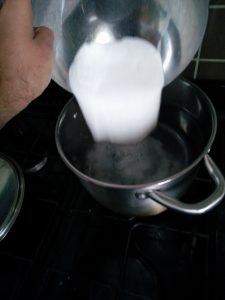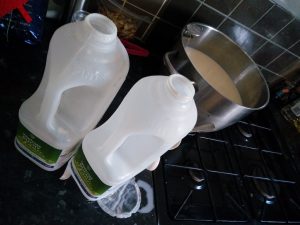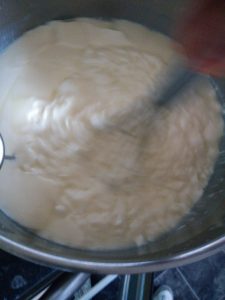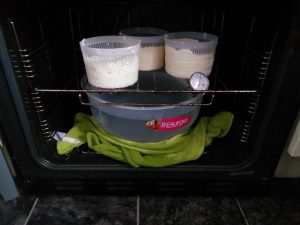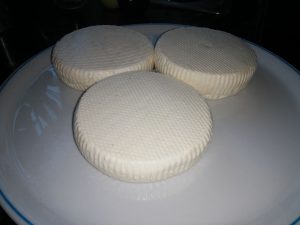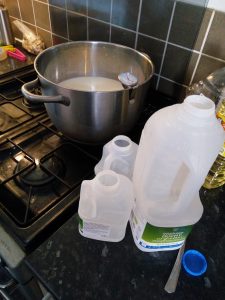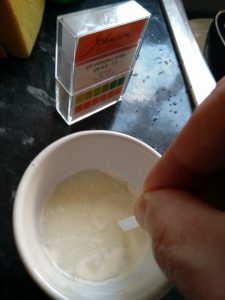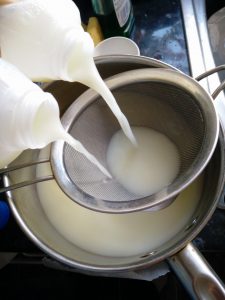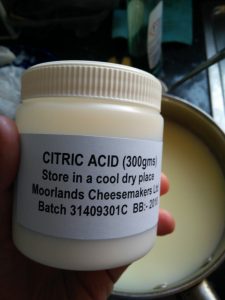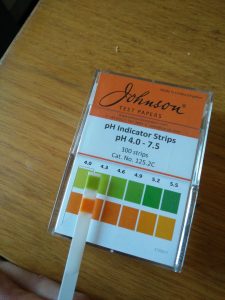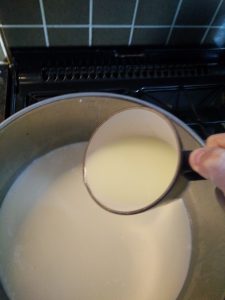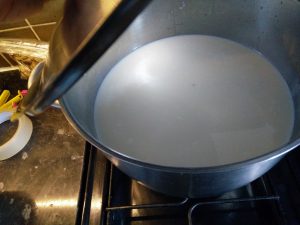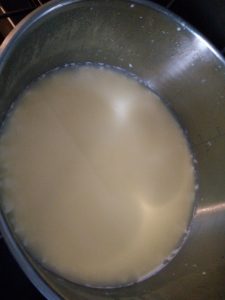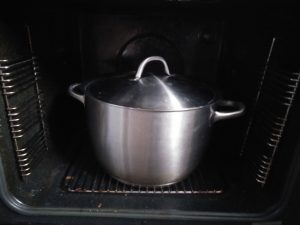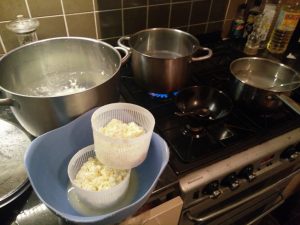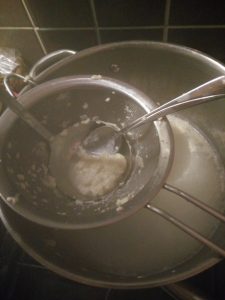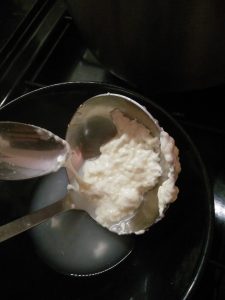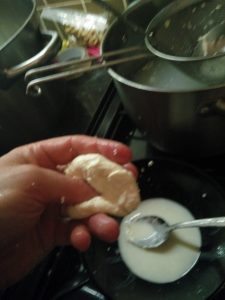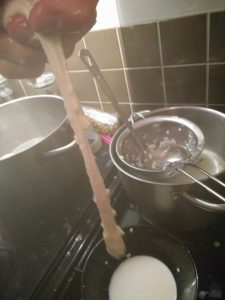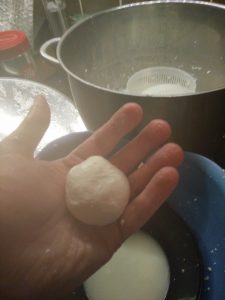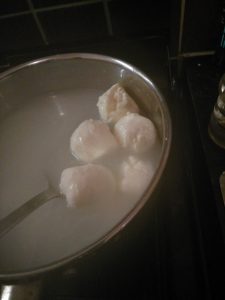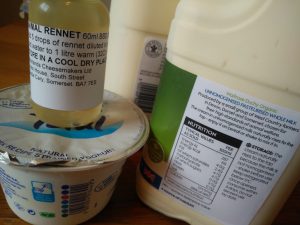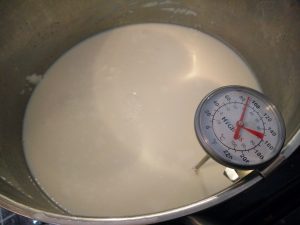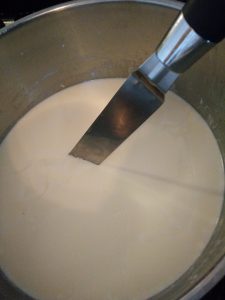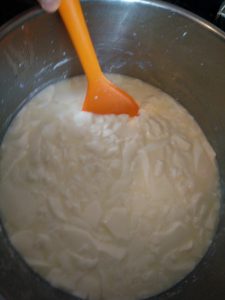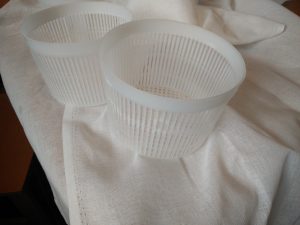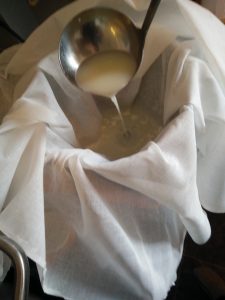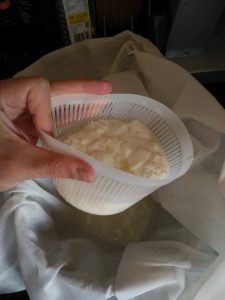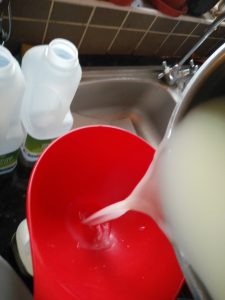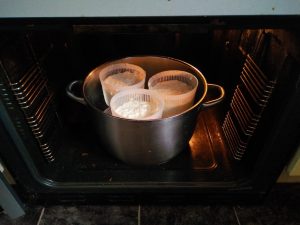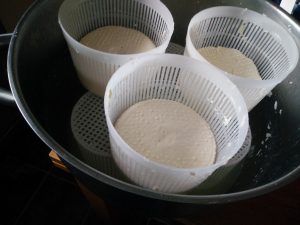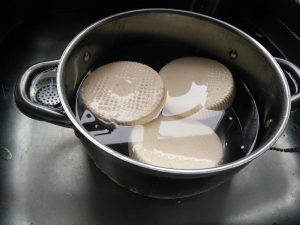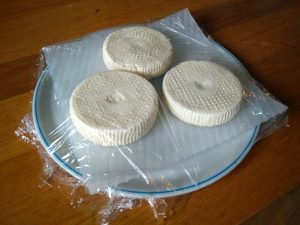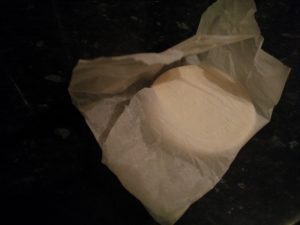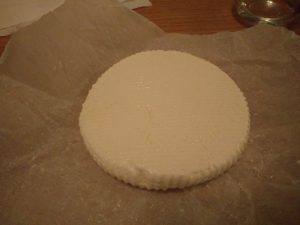Bel Paese (Italian for “Beautiful Country”), or Italico, is a relatively recent cheese. It was invented by Egidio Galbani (founder of one of the biggest industrial cheese-making companies in Italy) in 1906, as a response to the overwhelming quantities of French cheeses found in the shops in Milan. That’s where the vaguely nationalistic name comes from.
It’s not a particularly difficult cheese to make, which suits both the home and the industrial cheesemakers. It is a fresh cheese, which goes under a short period of maturation. I took inspiration from two recipes: one from Giallo Zafferano and one from Atlante Caseario.
As usual, start by preparing some brine, as you will need it later. For this recipe use 3 liters of water and 333g of salt, bring it to the boil, and let it cool until ~10C.
Do the usual trick: about 8 pints of milk with 70g of yogurt, bring this to 39C and let it cool for about 20 minutes.
At this stage, add rennet, cover up, and wait for 40 minutes. Break the curd in 4x4cm cubes, cover again, and let it set for 10 minutes. After this, take a whisk and give the whey and curd a good stir.
Wait about 5 minutes to let it gently set, then start filling your molds. You might use a cheese cloth if there is too much whey.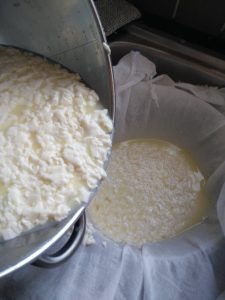
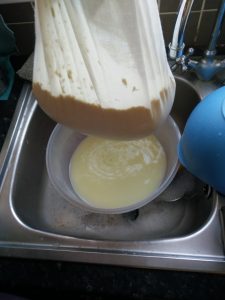
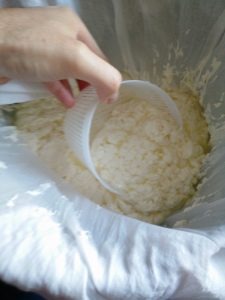
It’s time to stew the curd. Place it as usual in the switched off oven to drain the whey, as seen for example in my Crescenza recipe. In this case, I’ve put quite a bit of hot water below to make sure temperature and humidity are high.
Turn it over after 30′, then after 60′ from the first turning it, then after another 60′, then after another 60′. Wait 30′ and put it in brine for 4-5 hours, after which you can put the cheese in the molds, and in the fridge, covered.
For the first 3 days, turn it over twice a day, throw away the whey, and if the surface of the cheese is too wet, dry it with a cloth.
After this, turn it over every 1-2 days. Your Bel Paese is ready to eat after 20 to 40 days.
UPDATE: Two weeks later, this is how it looks. I’ve kept turning it every 1-2 days. It’s definitely more “wet” than crescenza, so I’ve also had to dry it a little with a clean cloth sometimes.
